From the sea, Dubrovnik’s medieval walls look timeless, but in the early 1990s they stood under fire. Known as the “Pearl of the Adriatic,” Dubrovnik thrived for centuries as a proud, independent republic, guarding its stone streets, Gothic palaces, and red rooftops. In 1991, war came to Croatia. The Yugoslav People’s Army shelled the Old City for months, striking homes, churches, and even the Sponza Palace, while residents huddled in basements as UNESCO issued urgent appeals to protect the World Heritage Site. When the siege ended, Dubrovnik’s scars were visible, yet the city refused to be defined by damage. Meticulous restorers replaced each shattered tile with handmade terracotta, rebuilt palaces stone by stone, and revived the city to its former glory.
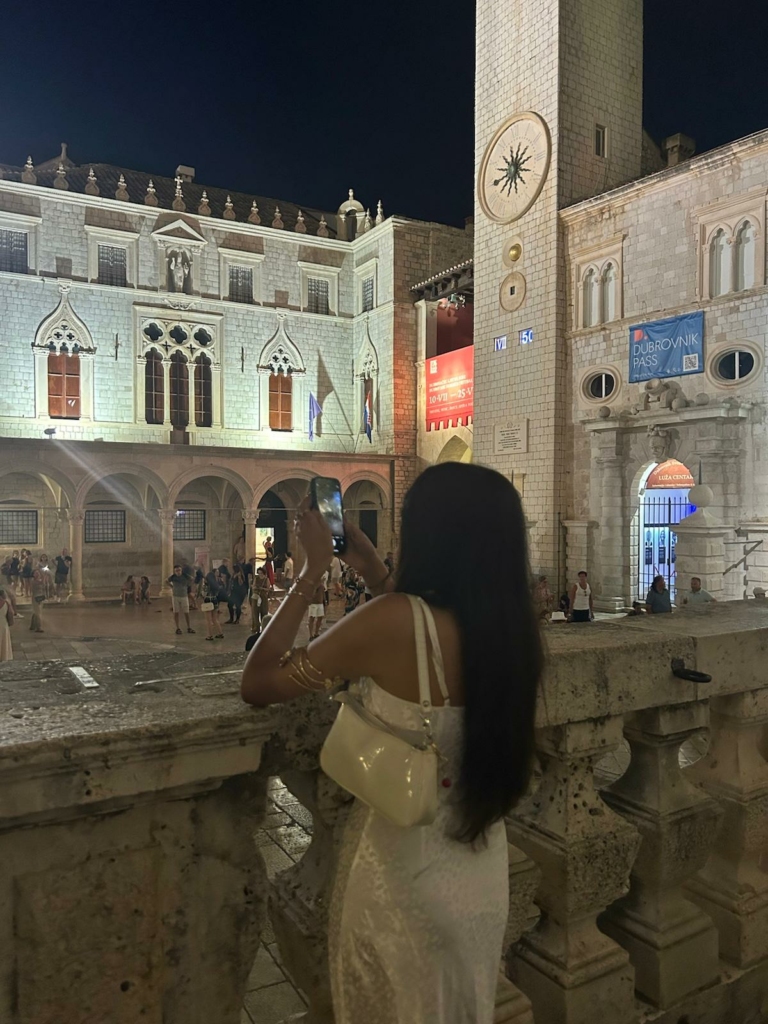
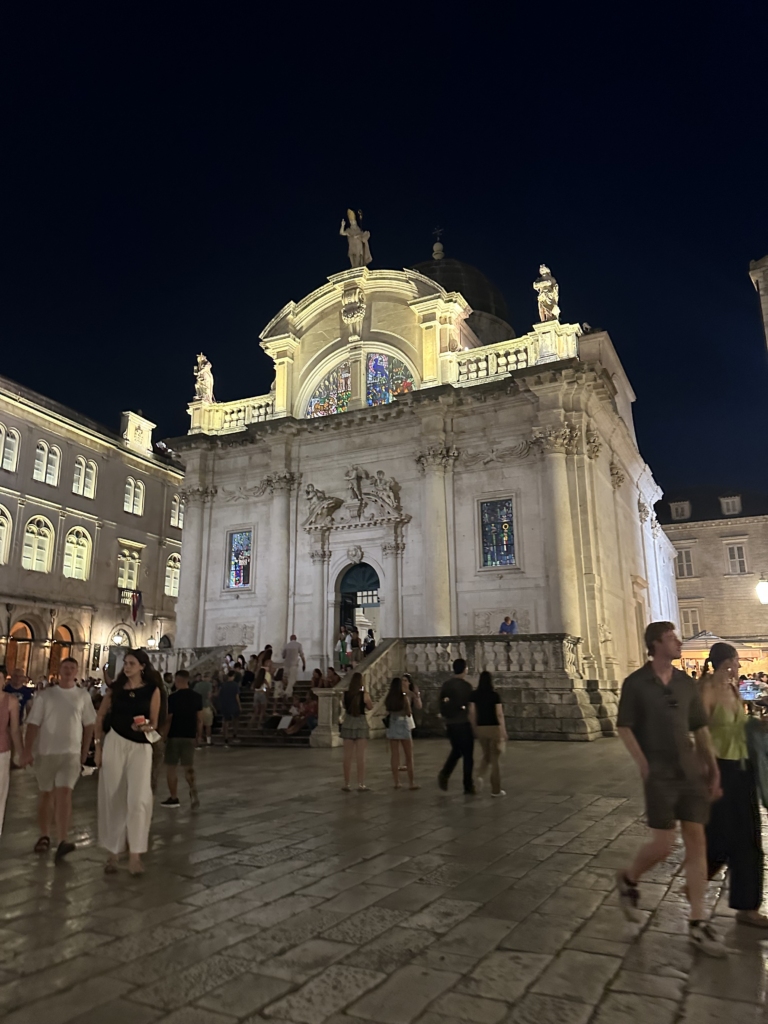
During our visit, we explored the Old City and met Mihaela Skurić, OWHC representative of Dubrovnik and Director at the Institute for the Restoration of Dubrovnik. She shared insights into the city’s long-term efforts to balance tourism with the preservation of cultural and natural heritage. We were also honored to receive welcome gifts from Dubrovnik’s mayor, recognizing our work to raise awareness about the city’s restoration! Seeing these efforts up close showed us that preservation is not only about repairing historic buildings, but also about managing visitor impact, protecting the city’s character, and supporting sustainable local life.
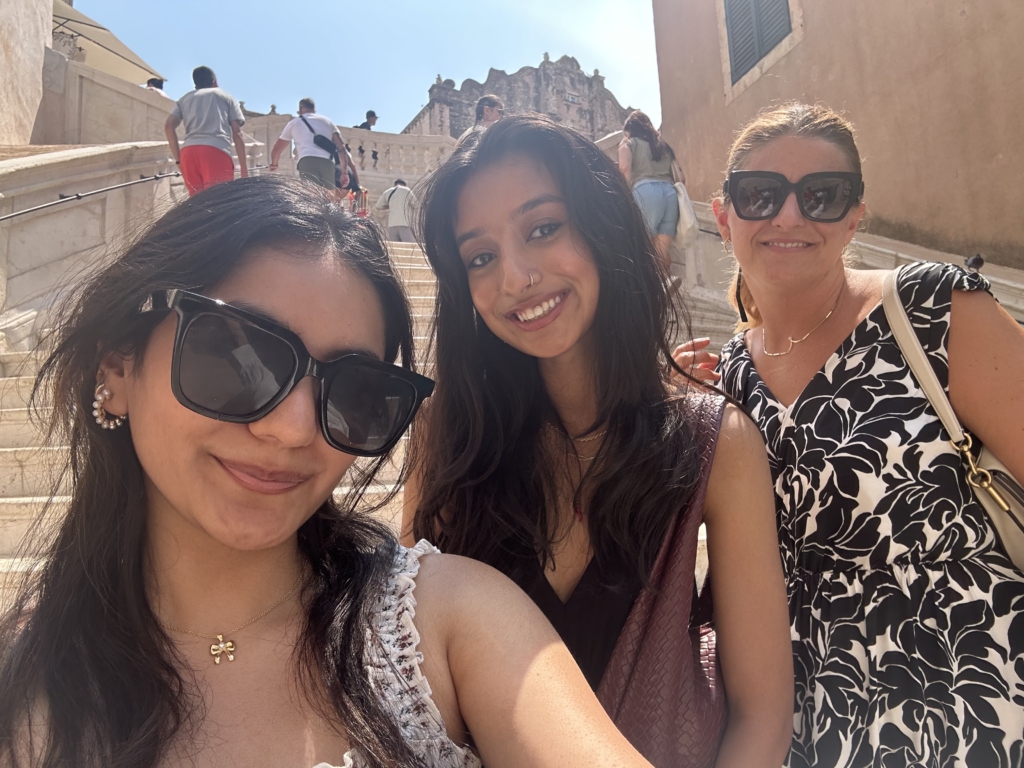
Mihaela also gave us a guided tour of the Old Port, explaining its historic role in trade and defense. From there, we took in views of Lokrum Island, a short ferry ride away. Lokrum offers a mix of nature and history: a botanical garden, beaches, and even a small Game of Thrones museum for fans of the show, which filmed scenes there. Seeing the island alongside Dubrovnik’s restored walls showed how heritage in this region extends beyond architecture to include landscapes, ecosystems, and living traditions.
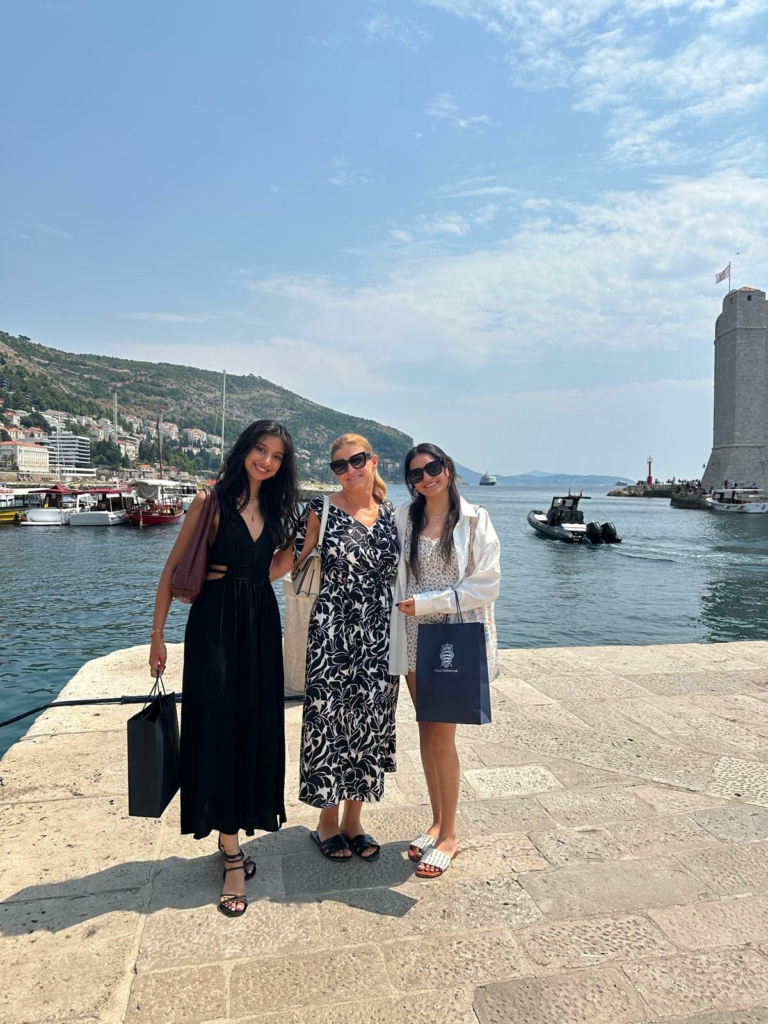

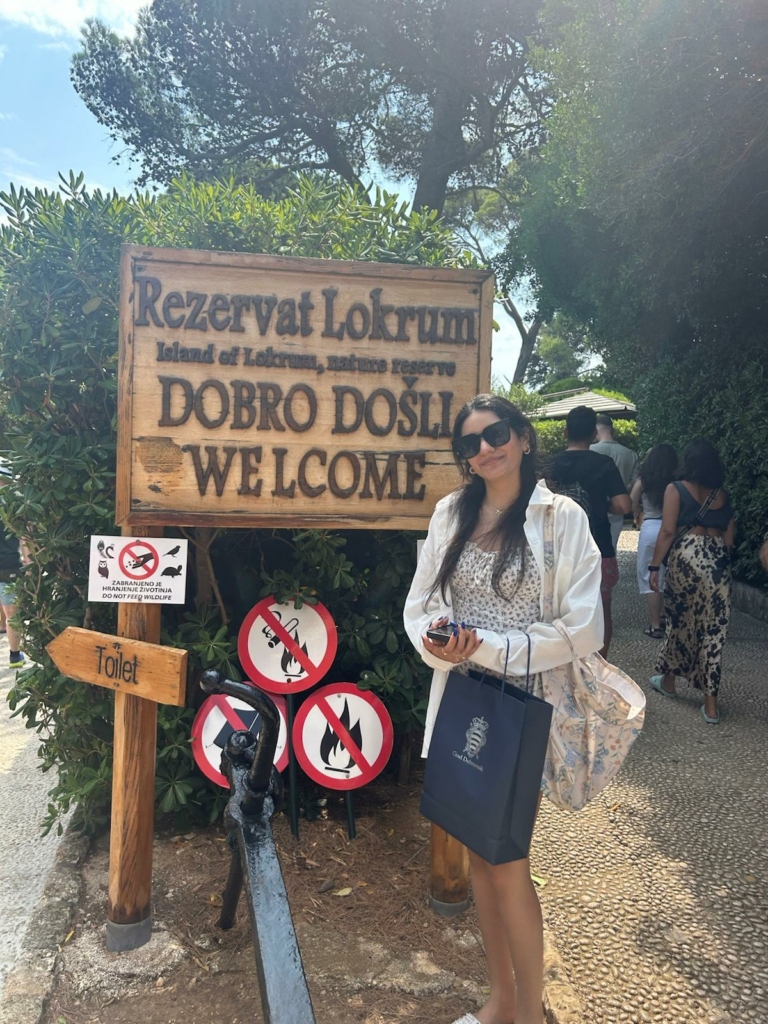
For us, Dubrovnik represents the theme of Past Rebuilt, Future Reimagined in a very real way. The city suffered destruction within living memory, yet its community chose to rebuild stone by stone instead of letting the past be erased. At the same time, Dubrovnik is reimagining its future by addressing the challenges of tourism, sustainability, and climate change. The lesson we took away is that rebuilding after conflict is not just about restoring buildings, but about renewing identity and creating a future where heritage continues to serve the people who live within it. Dubrovnik shows that resilience is both a memory of the past and a responsibility for the future.


